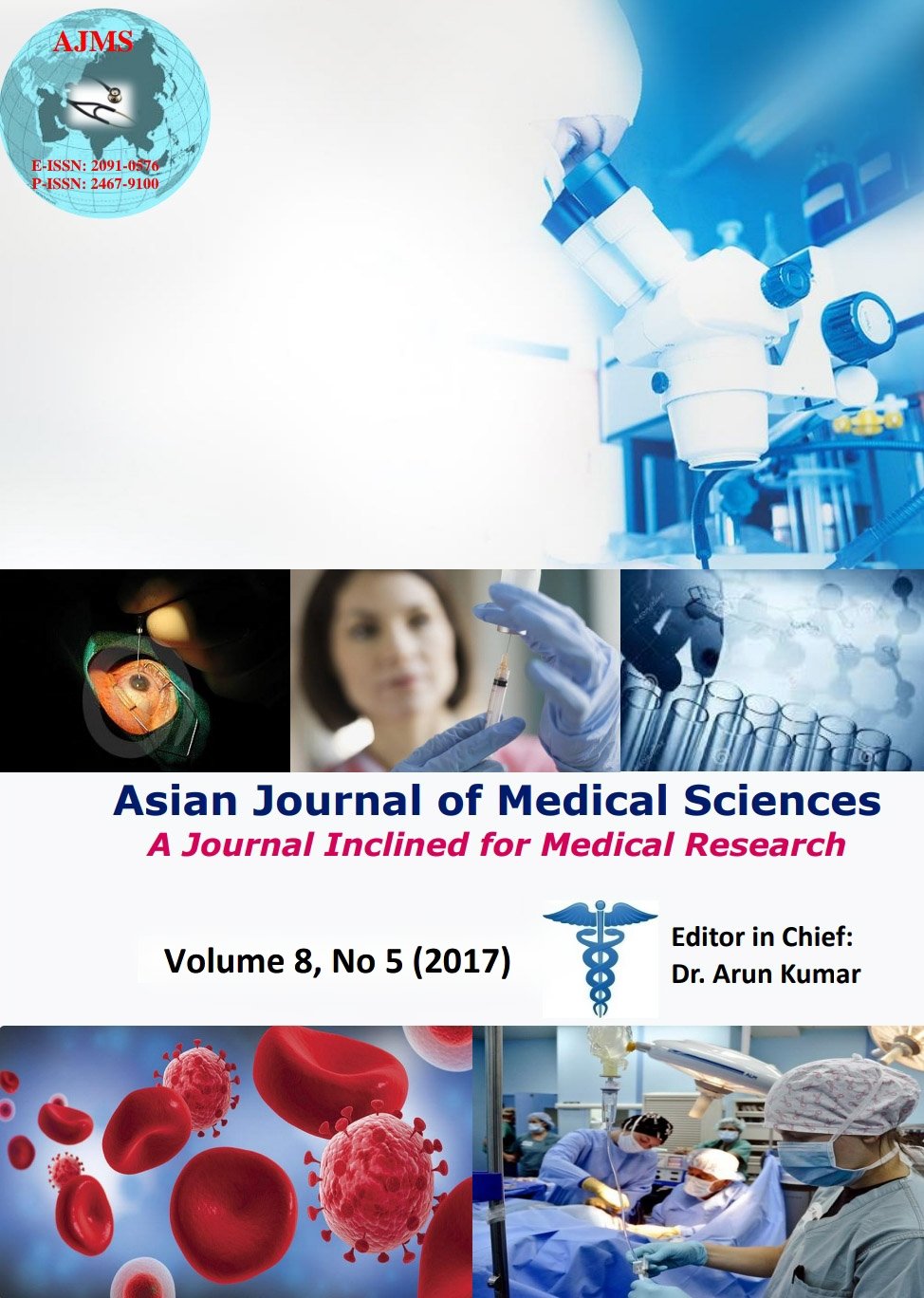Duodenal strongyloidiasis infection mimicking lymphangiectasia
Keywords:
Intestinal strongyloidiasis, Esophagogastroduodenoscopy (EGD), ELISAAbstract
Strongyloides stercoralis infection usually causes a chronic asymptomatic intestinal infection or otherwise non-specific generalized complaints. The diagnosis of strongyloidiasis by routine stool examination is very limited. Endoscopic findings in strongyloidiasis range from mucosal granularity to friable edema to frank ulceration or Small bowel obstruction secondary to intense infestation. The pathological examination of tissue biopsy and aspirate can give the definitive diagnosis. We report a case of middle age patient who presented with the symptoms of weight loss and diarrhea. On evaluation, upper GI endoscopy (EGD) showed the findings of lymphangiectasia but biopsy findings were consistent with strongyloidiasis which was successfully treated with Ivermectin 200 μg/kg, given for two days.
Asian Journal of Medical Sciences Vol.8(5) 2017 98-100
Downloads
Downloads
Additional Files
Published
How to Cite
Issue
Section
License
Authors who publish with this journal agree to the following terms:
- The journal holds copyright and publishes the work under a Creative Commons CC-BY-NC license that permits use, distribution and reprduction in any medium, provided the original work is properly cited and is not used for commercial purposes. The journal should be recognised as the original publisher of this work.
- Authors are able to enter into separate, additional contractual arrangements for the non-exclusive distribution of the journal's published version of the work (e.g., post it to an institutional repository or publish it in a book), with an acknowledgement of its initial publication in this journal.
- Authors are permitted and encouraged to post their work online (e.g., in institutional repositories or on their website) prior to and during the submission process, as it can lead to productive exchanges, as well as earlier and greater citation of published work (See The Effect of Open Access).




